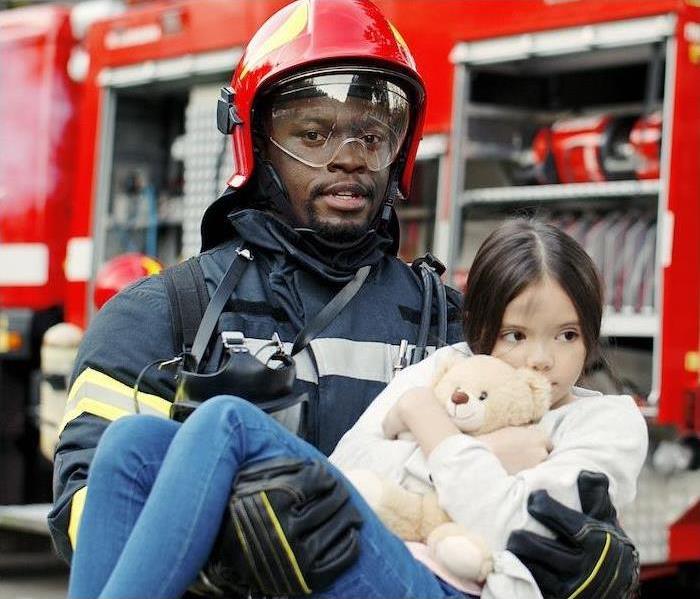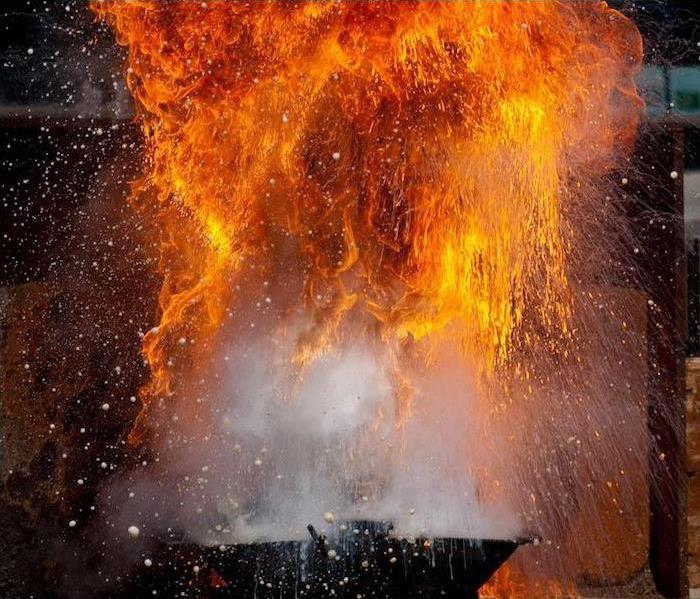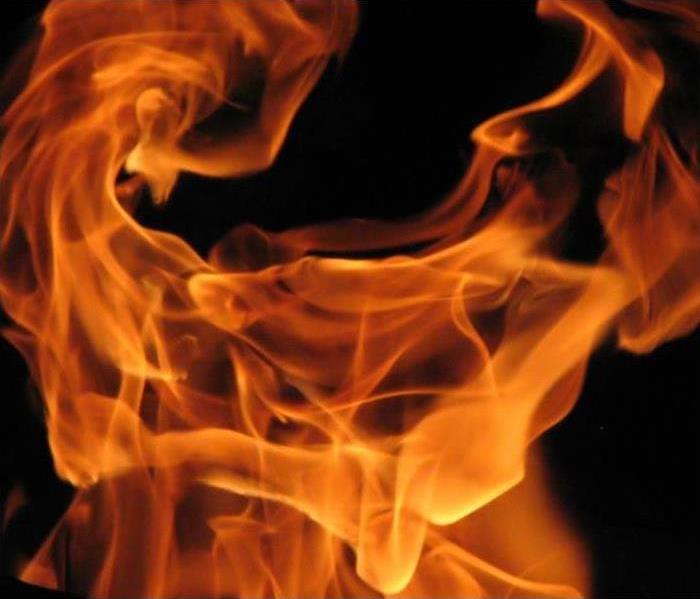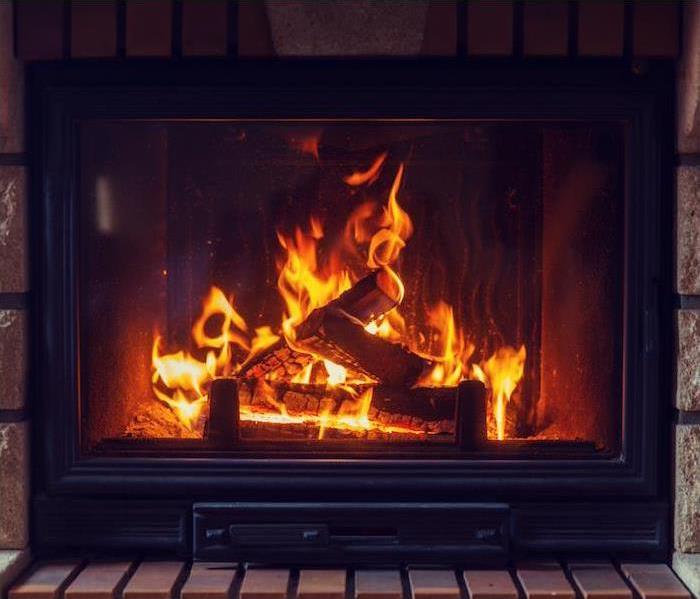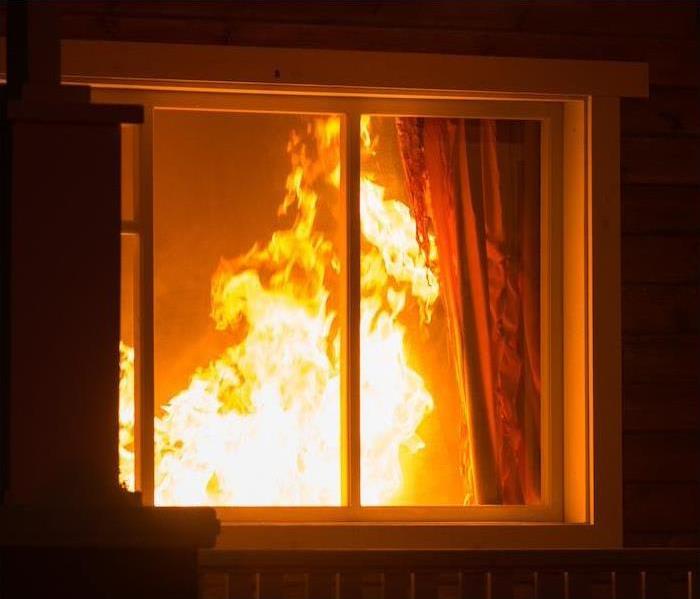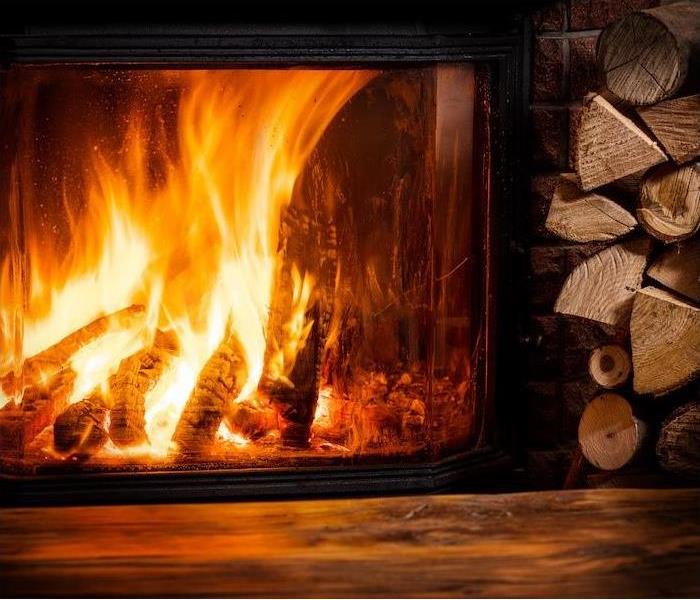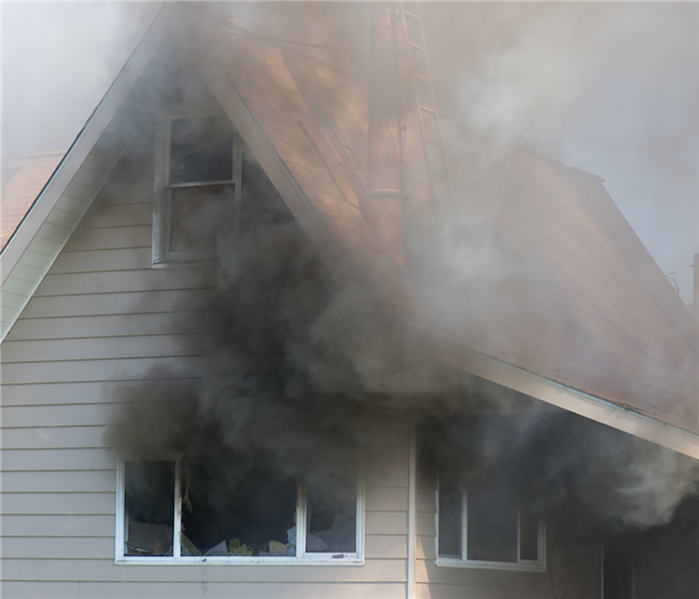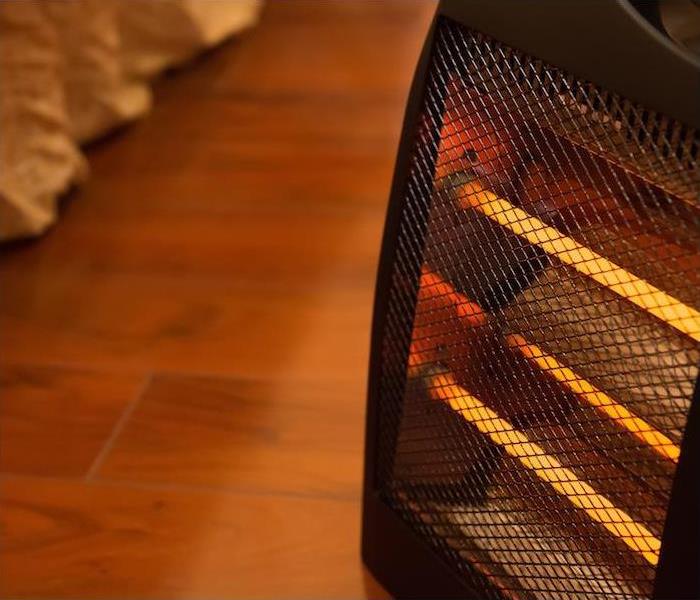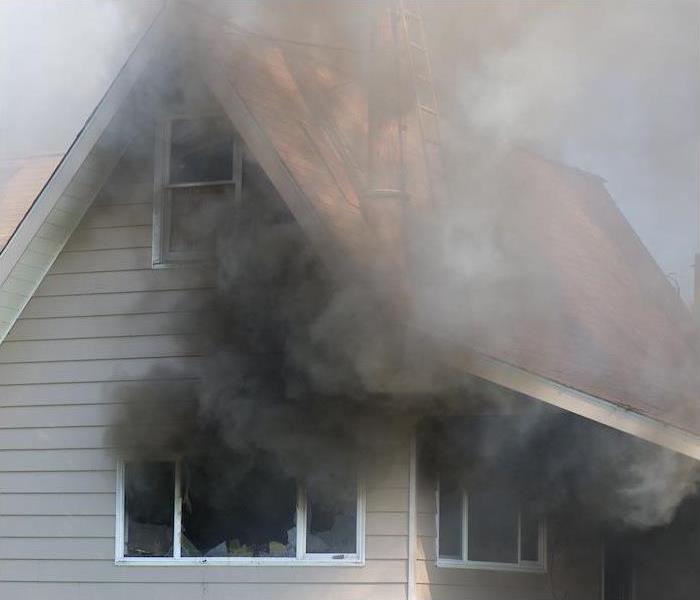Recent Fire Damage Posts
Does Your Family Have a Fire Escape Plan?
7/27/2022 (Permalink)
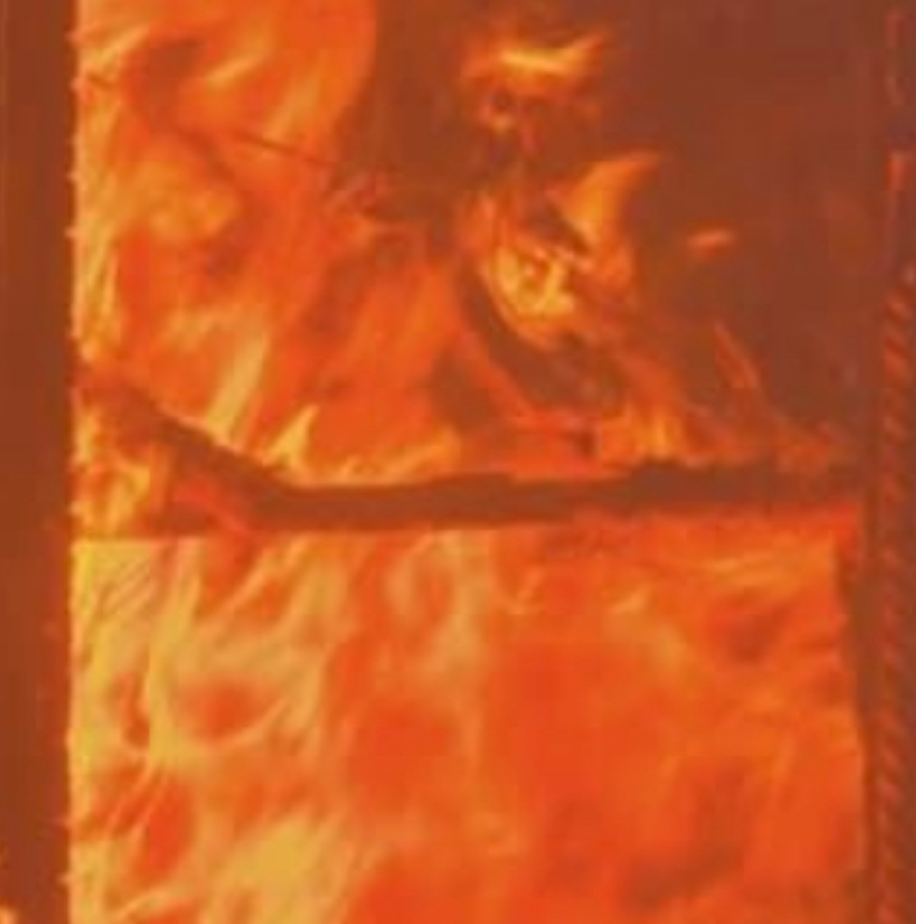 SERVPRO of The Lower Shore, Mid-Upper Shore and Talbot / Dorchester (410) 749-2221
SERVPRO of The Lower Shore, Mid-Upper Shore and Talbot / Dorchester (410) 749-2221
Most people do not spend a lot of time considering what they would do if there were a fire in their home. Consider though that the American Red Cross responded to more than 74,000 disasters in communities across the United States last year and 93 percent of these were fire related.
Having an escape plan is an important part of fire safety. According to the American Red Cross, only 26 percent of families have actually developed and practiced a home fire escape plan. You don't want to wait for an actual fire to find out if your family can escape.
Eighty percent of Americans don’t realize that home fires are the single most common disaster across the nation.
It's important to remember children under five and adults over 65 are more than twice as likely to die in a home fire than the rest of the US population.
Make a plan and ensure everyone in your home knows what to do. Smoke detectors, fire extinguishers and escape plans are all part of saving lives. After a fire, and after everyone is safe, give the damage your immediate attention.
If you have fire damage to your home call the restoration team that takes care of the Eastern Shore. SERVPRO of The Lower Shore, Mid-Upper Shore and Talbot / Dorchester (410) 749-2221.
We have trained technicians that are ready to help. We are able to respond quicker with the right resources, which is extremely important. A fast response lessens the damage, limits further damage, and reduces the restoration cost.
We are locally owned, and operated. Our restoration teams are well trained and properly equipped.
We respond to your call 24 hours a day 7 days a week. If you have fire damage our technicians can also help you recover items that are damaged.
Fire damage needs immediate attention, SERVPRO of The Lower Shore, Mid-Upper Shore and Talbot / Dorchester provides 24-hour water damage restoration service (410) 749-2221.
Fire Safety Tips to Keep Your Family Safe During the Holidays
12/7/2021 (Permalink)
 Have a safe and joyous holiday season
Have a safe and joyous holiday season
Every year there seem to be a lot of fire safety information that comes out as the holidays get closer. There are a few reasons for this. Did you know the top three days of the year for home candle fires are Christmas, New Year’s Day and New Year’s Eve? That’s according to the U.S. Fire Administration (USFA). They are responsible for developing and delivering fire prevention and safety education programs. (USFA) offers the tips below:
- Only use decorations that are flame-retardant or not flammable.
- Check holiday lights each year for frayed wires or excessive wear.
- Don’t link more than three strands of holiday lights.
- Never leave a burning candle unattended. Consider using battery-operated flameless candles.
- Keep your live Christmas tree away from heat sources and room exits.
- Water your live Christmas tree daily to keep it from becoming dry.
If you experience a fire during the holiday season, call the right team when the first responders have left your home or business.
After the fire it’s important to call experts, that have the right equipment and training. Each fire damage situation can be a little different, each one requires a unique solution tailored for the specific conditions.
SERVPRO of The Lower Shore, Mid-Upper Shore and Talbot / Dorchester has the equipment, expertise, and experience to restore your fire and smoke damage. We will also treat your property with care.
Training Matters When Selecting A Restoration Service
SERVPRO of The Lower Shore specializes in the cleanup and restoration of residential and commercial property after a fire, smoke or water damage event. Our staff is highly trained in property damage restoration. From initial and ongoing training at SERVPRO’s corporate training facility to regular IICRC-industry certification.
OUR TRAINING
SERVPRO of The Lower Shore, Mid-Upper Shore and Talbot / Dorchester, will respond quickly because we know the Shore. Our technicians will get to you quickly and we use advanced restoration and cleaning equipment.
SERVPRO of The Lower Shore provides 24-hour fire and water damage restoration service (410) 749-2221.
6 Things to Teach Your Kids About Home Fire Safety | SERVPRO® of The Lower Shore
11/4/2021 (Permalink)
You’ve likely had a lifetime’s worth of fire safety education (although despite it all, the top cause of home fires is still ignoring food while it’s cooking, but we feel sure you’re working on that). However many years you’ve been alive, you’ve got that many years of fire drills, NFPA advertising campaigns and OSHA talks at work under your belt.
Your kids, though, are at a natural disadvantage, because while they may have had some education, they don’t have the years and years of engrained fire safety knowledge you may now possess. But their knowledge and reactions as it pertains to fire safety are certainly no less important than yours, so it’s crucial that you do everything you can to empower them to react quickly and safely in the event of a fire.
Here’s the basic knowledge you should go out of your way to impart.
The sound of a smoke alarm. Make sure your kids know this is the sound of warning, but that it should provoke action, not fear. Younger children especially may be tempted to run and hide.
What firefighters wear. Listen, if a person showed up in your bedroom in the middle of the night looking like Darth Vader with a big ax, you might be a little skittish, too. Get your kids acquainted with the look of firefighters who are actively in rescue mode and gear.
The way out. Kids need to know the escape route you have established as a family and two ways out of every room.
How to exit safely. Teach kids to test doorknobs with the back of their hand to ensure it’s safe to open, and make sure they know to crawl out under smoke to avoid inhalation.
Get out, stay out and meet up. Teach your young ones to move quickly to your family’s designated meeting spot outside the home, so that you and the on-scene firefighters know everyone is accounted for. Stress to them the importance of staying out of the house once they’re outside, and that they shouldn’t reenter the home for any pets, toys or other items.
Call 911. If your underage child happens to be home alone without a cell phone, make sure he or she knows to knock on a neighbor’s door to quickly call 911 to get first responders on the scene.
Hammering home this information can help your kids react quickly and safely in the harrowing event of a fire.
Fire can cause serious damage to your home, but we can provide serious restoration. Contact SERVPRO today if you need fire recovery.
Grease Fire Prevention and Extinguishment | SERVPRO® of The Lower Shore
10/5/2021 (Permalink)
It’s pure instinct—when you see a fire, you throw water on it. Every cartoon you ever saw planted and reinforced this idea, so you can hardly be blamed for the initial gut reaction that occurs when the stovetop flares up.
It’s precisely because of this common instinct that grease fires are one of the scariest and most destructive kinds of home fire you may encounter. Considering that cooking fires are the top cause of both home fires and injuries, maybe we should take some extra care in considering the danger of grease fires.
Causes of a Grease Fire
Grease fires are caused by the overheating cooking oil or animal fat. When these cooking aids and byproducts become too hot, they begin to smoke, and then they ignite into a nasty blaze.
Animal fats will ignite at around 375 degrees, and vegetable oils do so at 450. Both of these benchmarks are well within reach of your stovetop, grill or oven, and there are several scenarios which could create this danger, including turning your burners too high initially, waiting too long to add ingredients or adding frozen food directly to hot grease.
But by far the most common cause of home cooking fires is unattended cooking. Left alone, your culinary creation can conflagrate into a colossal catastrophe.
How to Stop a Grease Fire
First things first: Go against your instincts and don’t put water on a grease fire. This will not only fail to extinguish it—it will cause it to spread.
Your best bet for putting out a grease fire quickly is to smother it. If it’s contained in a pan, you may be able to keep it from causing damage.
Turn off the heating element, and reach for a nearby lid or baking sheet that will completely cover the pan. Depriving the fire of oxygen will keep it from growing and eventually kill it.
A Class B fire extinguisher can also handle grease fires, as can a fire blanket.
If your fire breaks containment and spreads, call 9-1-1 immediately. Don’t try to fight a growing grease fire yourself.
If a fire, grease-based or otherwise, breaks out and causes damage at home, we’re here to make things right again. Contact SERVPRO® to get started.
Top Causes of Home Fires | SERVPRO® of The Lower Shore
7/19/2021 (Permalink)
Did you know fires are the No. 1 cause of home injury? More than slipping in the shower, tumbling down the stairs or stepping on Legos, fires happening in the house cause bodily harm.
According to the National Fire Prevention Agency, there are an average of 358,500 structural fires in homes each year in the United States, in which over 3,000 Americans die. The Stanford Children’s Hospital reports that at least one child perishes in a home fire every day.
What’s causing all these fires?
Cooking
Cooking is by far the highest source of home fires. High temperatures, grease and sometimes open flame can create a scenario in which fires occur.
In the summer, grills on decks and near home walls can be a serious danger as well. The No. 1 way to prevent these 49% of home fires? Stay close and pay attention.
Heating Appliances
Around 12% of all home fires are caused by heating appliances, typically of the smaller nature. Things like baseboard heaters and space heaters can catch nearby fabric or curtains on fire, even igniting the upholstery of a couch or chair.
Kerosene heaters can explode, and any heater left running while you’re away from the house is a fire hazard. Twenty-five thousand home fires happen this way every year.
Electricity and Wiring Fires
Electrical issues like short circuits cause about 10% of residential fires, and account for approximately 18% of deaths from fire. Faulty wiring or short circuits cause sparks inside walls that catch building materials on fire, and these fires can grow quickly before being noticed.
If you live in an older home, your wiring is more likely to fail. Have a professional examine it, and install any necessary upgrades or circuit protectors.
Smoking
Smoking incidents, while only making up 5% of home fires, are the single most common cause of death in home fires.
Lit cigarettes and smoking paraphernalia are a dangerous ignition source, especially when people smoke in bed or otherwise fall asleep while smoking.
Chemical Fires
Fuel sources and chemicals release fumes that can ignite if they come in contact with sparks, and some can even spontaneously combust with the right mixture of oxygen and heat.
Always make sure gasoline and other chemicals are stored in approved, sealed containers.
No matter the cause, fire can be devastating to your home. Contact your local SERVPRO today to see how we can help you recover from fire damage.
Staying Safe While Using Your Home’s Fireplace l SERVPRO® of The Lower Shore
1/22/2021 (Permalink)
If your family enjoys spending an evening by the fire, you’re not alone. For many people, a wood-burning fireplace is an attractive feature for a family living room. They’re especially popular during the winter months when long nights at home make a warm fire especially appealing.
Wood-burning fireplaces can be very safe if they’re used the right way. Before you start a roaring fire at your home, take steps to be certain your fireplace and chimney are ready to warm your family safely.
Fireplace Safety Basics
Before you light your fire, you’ll need to ensure your chimney is capped and doesn’t have any cracks. You can get your home inspected and your chimney checked to be certain that it’s ready to be used.
Here are a few more things to do before you start your fire:
Consider cracking a window. Even though it’s probably cold outside, the American Academy of Pediatrics recommends this step to ensure your family is getting adequate clean air.
Add a screen. Fireplace screens are important to help protect your family from the dangers that an open fire can represent.
Clean your fireplace. Don’t let ashes and debris gather. These can cause a fire hazard if you light fire after fire on top of them.
Keep your fireplace clear. Not only is what’s inside the fireplace important, what’s around it matters, too. It would help if you kept your fireplace area clear from rugs, wood, paper and anything flammable. Don’t let kids or pets too close, either.
Be prepared for the unexpected. Have a fire extinguisher handy. Also, be certain you have working smoke alarms and a carbon monoxide detector.
If your home is damaged due to a fire or any other cause, you can always count on us for restoration assistance. We have crews who are available 24⁄7 in the event of an emergency. Contact us at any time to learn more about our restoration services and how we can help.
Hebron Families Can Protect Their Homes from Dryer Fire Risks l SERVPRO® of The Lower Shore
1/11/2021 (Permalink)
Did you know that clothes dryers cause more than 13,800 house fires every year?
This modern convenience that we rely on daily can indeed be a home fire hazard if it’s not maintained properly. Fires caused by dryers can really be boiled down to a couple of major causes. The first is an improperly vented dryer.
You can check your dryer’s vent against the standard safety regulations—they’re different for gas dryers and electric dryers.
The second is easier to prevent. If a dryer’s vent isn’t cleaned regularly, it can pose a problem. So the best way to lower your risk for this type of fire is to clean your dryer vent every time you use it.
While it’s smart to take steps to prevent problems like dryer fires, even the most diligent homeowner can be caught unaware sometimes. If that happens, it’s good to have a local team available to guide you through the restoration process.
We’re Here at Every Step
Families living in The Lower Shore can rely on us as a trusted partner during the restoration process. Here’s why:
We help with the whole restoration process. Depending on where it happens, fire can damage walls, upholstery and property. But that’s not all. The aftermath can also include water damage and smoke damage. Our team can repair and remediate all of these issues.
We work to restore your home first. It’s our goal to help you recover from a fire in a way that’s both logical and economical. We work with you through restoration and help you save money on repairs and insurance premiums. This often involves restoring or repairing rather than replacing.
We are locally owned. SERVPRO has locations all across the United States. But we’re also a Hebron-based business with a team of experts who live here in our community. That means we have access to the resources, equipment and training of a leading-edge company, combined with the benefit of knowing and understanding the area where we live.
We’re available to help at any time. Fires don’t always happen during regular working hours. Beginning the restoration process quickly is a vital step in getting your home back to its original state. Timing matters during an emergency. We make sure our team is available 24⁄7 you need us.
If you have fire damage in your home, you can count on us for restoration assistance. Our team is always ready to meet your needs and help you restore your home. Contact us any time to learn more about our restoration services.
Make Sure to Prioritize Safety When Using Your Fireplace | SERVPRO® of The Lower Shore
12/1/2020 (Permalink)
As the weather turns cooler and the nights get longer, more and more of us will be making use of fireplaces to heat our homes throughout the winter. While this can be done safely, it is important to always use caution when an open flame is involved, even when it is mostly contained. It has been found that the majority of house fires occur during the winter months, many of which are due to issues related to fireplaces and heating accidents.
Fortunately, there are plenty of safety measures you can take to make using your fireplace a much less risky experience. You can have all the coziness of a warm, crackling fire without nearly as much of the risk thanks to these helpful tips below.
Helpful Tips to Make Using Your Fireplace Safer
The National Fire Protection Administration reports that half of home heating fires occur between December and February, but with safety in mind, you can reduce your chances of one happening to you. Here are some great tips for using your fireplace safely:
- Always have your chimney inspected before use each year.
- Never leave a fire unattended, whether you are going to sleep or leaving the house.
- Keep a three-foot buffer around the fireplace that is free from flammable objects, children and pets.
- Make sure to always have a fire extinguisher nearby in case embers do begin to spread.
- Avoid using a vacuum to clean up ashes, as they can still spark fires.
- Do not let ashes build up to be more than an inch thick in the bottom of the firebox.
- Be sure that no tree limbs or other debris have grown near your chimney, and always trim them back before using the fireplace.
- Use a metallic mesh screen or glass fireplace guard every time you start a fire.
- Make sure your smoke and carbon monoxide detectors are operational each time you use your fireplace.
If you have fire damage to your home, we are here to help with the restoration process from beginning to end. You can get in touch with us any hour of any day to report damage—contact us for more information.
Steps to Create a Fire Escape Plan for Your Business | SERVPRO® of The Lower Shore
3/2/2020 (Permalink)
While not every business is required to have a written Emergency Action Plan, every business owner should prepare for the possibility of a fire.
Though one would hope to never have to face a fire in the workplace, it is important for the safety of your employees and the longevity of your business that you know what to do should one break out.
How to Create a Plan
By planning thoroughly for how to escape from a workplace fire, you can be aware of exactly what to do should one occur. Here are the five steps to creating a fire escape plan for your workplace:
- Brainstorm scenarios.While the majority of workplace fires are a result of cooking, it is important to consider other possible scenarios as well. Consider all possible areas a fire could break out in order to determine your execution of the next step.
- Plan evacuation routes and escape procedures.It is important that all employees know exactly how to escape in a timely manner. Plan evacuation routes from every area of the building, ensuring each room has two methods of escape. Create a workplace evacuation mapand hang it prominently on escape routes and near stairwells to alleviate confusion.
- Schedule drills often.Scheduling drills is one of the best ways to practice preparedness as you can rehearse your evacuation plan and ensure it is as efficient as possible. Let employees know in advance when a drill is coming, but be sure they know to take it seriously.
- Ensure equipment is operational.It is important to regularly check your smoke alarms and sprinkler systems to ensure they are working, and inspect your fire extinguisher to be sure it is not expired.
- Have a plan for the aftermath.While your chief concern should be helping all personnel get to safety in the tense moments of a fire, planning in advance for the aftermath is important. Keep copies of important business documents such as your insurance policy in a secure location such as a safety deposit box, and be sure you’ve done your research on commercial restorationso you can focus on reopening your doors quickly.
As leaders in commercial restoration, we’re always here to help if your business has suffered from a fire. Contact us today to learn about how we handle commercial restoration correctly.
(410)749-2221
Our Fire Restoration Process Can Help You Recover Faster | SERVPRO® of The Lower Shore
3/2/2020 (Permalink)
After a house fire, many people find there is a significant emotional impact in addition to the physical one. The quicker your home is back to its pre-fire condition, the quicker you can begin to heal.
After years in the restoration business, we understand how important rapid response time is. That is why when you call us after a house fire, we’ll respond quickly. Using our multi-step restoration process, we can help you reclaim your home and recover from a fire.
Our Step-by-Step Fire Restoration Process
- Initial Contact
After a fire, call us right away. Thanks to our 24⁄7 emergency line, we will always have someone there to gather information about the damage and dispatch our response team.
- Damage Evaluation
To develop our restoration plan, we thoroughly inspect your home to determine the extent of the damage, paying attention to where the fire, smoke and soot have spread.
- Protection Service
If the fire has compromised your home to the elements, we will tarp and board up exposure areas to prevent adding to the damage.
- Water Removal (if Necessary)
Fire damage will often involve water damage because it is typically how fires are extinguished. If this is the case, we begin the drying process to prevent further water damage, utilizing advanced tools to dry out the affected areas quickly.
- Smoke and Soot Removal
Soot contains hazardous chemicals and can cling to nearly any surface of your home. For this reason, we take soot removal very seriously and bring highly advanced equipment to remove every trace of it.
- Clean and Sanitize
Utilizing the industry-recommended cleaning techniques, we are able to restore a variety of belongings to their pre-fire condition by cleaning, sanitizing and disinfecting them so they are safe for use. We will also clean lingering smoke smells and airborne soot particles from the air using air scrubbers.
- Restoration
Restoring your home to its pre-fire condition is the final step in the process. It can range from minor tasks such as drywall restructuring or installing new flooring to major reconstruction. Regardless of what restoration your home needs, we can handle it all.
If you need fire restoration, get in touch with us today to learn more about our process and how we can help you.
(410)749-2221
Top Residential Fire Risks You Need to Know | SERVPRO® of The Lower Shore
12/9/2019 (Permalink)
While we are all familiar with the possibility of a house fire, many are shocked to find out just how common they are: It is estimated that firefighters respond to a fire every 24 seconds in the United States.
Though it is not a pleasant thought, understanding the ins and outs of house fires is a necessary precaution to make safer decisions at home and at work. By knowing the most common fire causes, individuals can be sure to implement proper safety measures where it matters most and reduce the risk that they will experience a house fire themselves.
While there are many things that can lead to a house fire, we have made a list of the top four so you can stay safe.
The Top 4 Causes of House Fires
- Cooking
Cooking is the No. 1 cause of home fires, according to the National Fire Protection Association. Because using the stove or oven is something many people do every day, the conditions are ripe for a fire to occur at any moment. It is important to always exercise safety in the kitchen and never leave the stove or oven unattended while cooking. - Electrical Malfunctions
Though electricity is generally harmless, unsafe electrical practices lead to 24,000 fires each year. Overloaded outlets, frayed cables and outdated appliances are all common causes of electrical fires and something individuals should watch out for. - Heating
Errors in heating are a leading cause of home fires, especially during the winter months. Though space heaters are useful for keeping your central heating bill reasonable, it is important to select models with safety features to prevent a fire from starting. Automatic shut-offs are the most important thing, so the unit will switch off if it tips over or begins to get too hot. - Candles
Because candles are quite common in most homes, it is easy to forget just how dangerous they can be. The open flame of a candle can quickly spread if placed too close to surrounding flammable objects or if allowed to burn too long. Never leave lit candles unsupervised and never put them on a surface that could tip over or disrupt the candle in any way.
If your home has suffered from a house fire, we are here 24⁄7 to take your call and start the fire restoration process. 410-749-2221
Our Fire Restoration Process Can Help You Recover Faster | SERVPRO® of The Lower Shore
12/9/2019 (Permalink)
After a house fire, many people find there is a significant emotional impact in addition to the physical one. The quicker your home is back to its pre-fire condition, the quicker you can begin to heal.
After years in the restoration business, we understand how important rapid response time is. That is why when you call us after a house fire, we’ll respond quickly. Using our multi-step restoration process, we can help you reclaim your home and recover from a fire.
Our Step-by-Step Fire Restoration Process
- Initial Contact
After a fire, call us right away. Thanks to our 24⁄7 emergency line, we will always have someone there to gather information about the damage and dispatch our response team.
- Damage Evaluation
To develop our restoration plan, we thoroughly inspect your home to determine the extent of the damage, paying attention to where the fire, smoke and soot have spread.
- Protection Service
If the fire has compromised your home to the elements, we will tarp and board up exposure areas to prevent adding to the damage.
- Water Removal (if Necessary)
Fire damage will often involve water damage because it is typically how fires are extinguished. If this is the case, we begin the drying process to prevent further water damage, utilizing advanced tools to dry out the affected areas quickly.
- Smoke and Soot Removal
Soot contains hazardous chemicals and can cling to nearly any surface of your home. For this reason, we take soot removal very seriously and bring highly advanced equipment to remove every trace of it.
- Clean and Sanitize
Utilizing the industry-recommended cleaning techniques, we are able to restore a variety of belongings to their pre-fire condition by cleaning, sanitizing and disinfecting them so they are safe for use. We will also clean lingering smoke smells and airborne soot particles from the air using air scrubbers.
- Restoration
Restoring your home to its pre-fire condition is the final step in the process. It can range from minor tasks such as drywall restructuring or installing new flooring to major reconstruction. Regardless of what restoration your home needs, we can handle it all.
If you need fire restoration, get in touch with us today to learn more about our process and how we can help you. 410/749/2221
Wicomico Country Smoke and Soot clean up
2/7/2019 (Permalink)
Smoke and soot is very invasive and can penetrate various cavities within your home, causing hidden damage and odor. Our smoke damage expertise and experience allows us to inspect and accurately assess the extent of the damage to develop a comprehensive plan of action.
Smoke and soot facts:
- Hot smoke migrates to cooler areas and upper levels of a structure.
- Smoke flows around plumbing systems, seeping through the holes used by pipes to go from floor to floor.
- The type of smoke may greatly affect the restoration process.
Different Types of Smoke
There are two different types of smoke–wet and dry. As a result, there are different types of soot residue after a fire. Before restoration begins, SERVPRO of the Lower Shore will test the soot to determine which type of smoke damage occurred. The cleaning procedures will then be based on the information identified during pretesting. Here is some additional information:
Wet Smoke – Plastic and Rubber
- Low heat, smoldering, pungent odor, sticky, smeary. Smoke webs are more difficult to clean.
Dry Smoke – Paper and Wood
- Fast burning, high temperatures, heat rises therefore smoke rises.
Protein Fire Residue – Produced by evaporation of material rather than from a fire
- Virtually invisible, discolors paints and varnishes, extreme pungent odor.
Our Fire Damage Restoration Services
Since each smoke and fire damage situation is a little different, each one requires a unique solution tailored for the specific conditions. We have the equipment, expertise, and experience to restore your fire and smoke damage. We will also treat your family with empathy and respect and your property with care.
Have Questions about Fire, Smoke, or Soot Damage?
Call Us Today – 410-749-2221
Holiday Fires - Christmas Tree Fire Safety
11/11/2016 (Permalink)
 Christmas Fires
Christmas Fires
Statistics from the National Fire Protection Association (NFPA) show the holidays are a high-risk time for home fires. Christmas trees are responsible for 240 home fires each year, and other holiday decorations are the cause of another 1,170 fires.
Here are some tips to keep your home safe this holiday season:
•Check the stand daily to make sure that the level of water does not go below the base of the tree.
•Keep trees at least three feet away from major sources of heat (fireplaces, heaters, heat vents, and direct sunlight). Lowering the room temperature will slow the drying process.
•Use lights that produce low heat, such as miniature lights, to reduce drying of the tree.
•Always inspect light sets before placing them on the tree. If worn, replace with a new set.
•Do not overload electrical circuits.
•Always turn off the tree lights when leaving the house or when going to bed.
•Monitor the tree for freshness. After Christmas or if the tree is dry, remove it from the house.
•Install and ensure smoke alarms work inside and outside each bedroom and sleeping area. Install alarms on every level of the home, including the basement.
If you have a fire, call SERVPRO of the Lower Shore. We make it like it never even happened.
Wicomico, Worchester, and Somerset County Smoke and Soot Cleanup
9/16/2016 (Permalink)
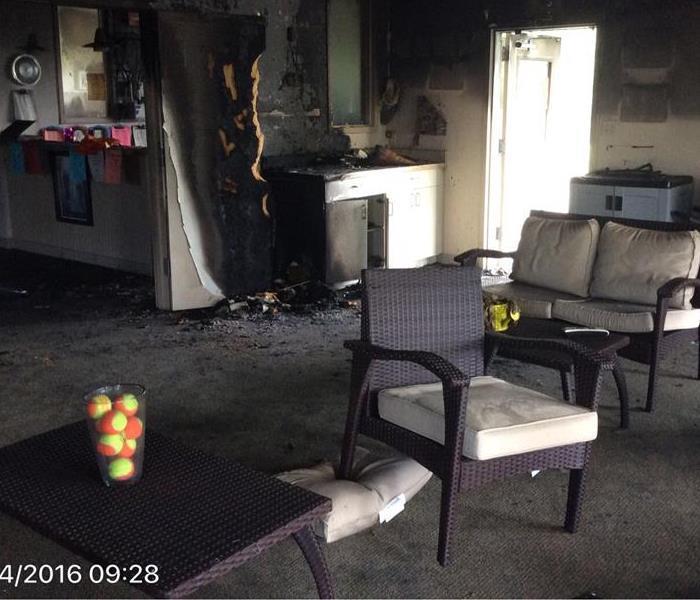 Smoke and Soot Damage Can Cause a Pervasive Odor in Your SERVPRO of the Lower Shore Home.
Smoke and Soot Damage Can Cause a Pervasive Odor in Your SERVPRO of the Lower Shore Home.
Smoke and soot is very invasive and can penetrate various cavities within your home, causing hidden damage and odor. Our smoke damage expertise and experience allows us to inspect and accurately assess the extent of the damage to develop a comprehensive plan of action.
Smoke and soot facts:
- Hot smoke migrates to cooler areas and upper levels of a structure.
- Smoke flows around plumbing systems, seeping through the holes used by pipes to go from floor to floor.
- The type of smoke may greatly affect the restoration process.
Different Types of Smoke
There are two different types of smoke–wet and dry. As a result, there are different types of soot residue after a fire. Before restoration begins, SERVPRO of the Lower Shore will test the soot to determine which type of smoke damage occurred. The cleaning procedures will then be based on the information identified during pretesting. Here is some additional information:
Wet Smoke – Plastic and Rubber
- Low heat, smoldering, pungent odor, sticky, smeary. Smoke webs are more difficult to clean.
Dry Smoke – Paper and Wood
- Fast burning, high temperatures, heat rises therefore smoke rises.
Protein Fire Residue – Produced by evaporation of material rather than from a fire
- Virtually invisible, discolors paints and varnishes, extreme pungent odor.
Our Fire Damage Restoration Services
Since each smoke and fire damage situation is a little different, each one requires a unique solution tailored for the specific conditions. We have the equipment, expertise, and experience to restore your fire and smoke damage. We will also treat your family with empathy and respect and your property with care.
Have Questions about Fire, Smoke, or Soot Damage?
Call Us Today – 410-749-2221
What to do in case of a fire
8/5/2016 (Permalink)
What You Should Do When Dealing with Fire Damage in Your Home
Life has enough interruptions and bumps along the way without the unwanted disaster of a house fire. The aftermath is almost as bad but much longer-lasting. Even small fires can merit the use of a professional restoration company. Cooking fires that spread beyond the stove, barbecue grills that go haywire, and even small appliances that catch fire can cause damage to surrounding areas.
Small Fires can Pose High Risks
While you should never pour water on a grease fire, nor on an electrical one, many times that is a person's first reaction anywhere. This can cause even more damage. Cooking fires and electrical shorts are common causes of Wicomico, Somerset, and Worchester County fire damages. It can also create physical risks to people standing nearby. With grease fires, baking soda should be poured into the skillet and any grease or oil that has caught fire outside of the cooking pan or skillet instead of water.
With electrical fires, the appliance should be unplugged if it can be safely done, but not by pulling on the cord. This can cause the cord to snap, leaving the plug, without the cord, still in the outlet. The power to the area where this is happening should be shut off at the fuse box as quickly as possible to eliminate the hazard.
After the Fire is Out, It's Time to Repair the Damage
When there's been a localized fire, you should have someone assess the damages for you. This can often help with insurance documentation. Landlords, if you are renting, will also appreciate if you inform them of the fire, and they can see the damage for themselves. It is every landlord's worst nightmare to have a fire or flood damage their properties. If they can see the amount of damage, they can rest easier knowing the extent of the repairs required. Fires do happen, through nobody's fault, and your landlord will know this.
Damage can range from blackened walls and countertops to heavily burned surfaces, electrical wires being damaged and requiring replacement, to floors suffering damage so severe they must be replaced to be safe again. Having experts conduct the repairs needed can greatly facilitate insurance claims being resolved, as well.
Locally Owned Company with National Resources
At SERVPRO of the Lower Shore, we have highly trained and skilled professionals who are experienced in all sizes of fire damage clean-up and restoration. We are available 24 hours a day, seven days a week to help you clean-up and repair fire damage, no matter how large or small. Call us at (410) 749-2221 to get the necessary damages repaired and the mess eliminated so you can go back to your daily routine.
Recovering from Home Fire Damage in Salisbury
8/5/2016 (Permalink)
Recovering from home fire damage
Cleaning up the damage from a fire can be a time consuming task. Recovering from a home fire often involves expensive repairs to your home. When dealing with fire damage, you must contact your insurance agent and work to restore your home to its former glory. On top of that, your home likely won't be livable, which forces you to reside in temporary housing. All of these things can certainly take a toll, and that is why hiring a professional Salisbury fire damage contractor can be a worthwhile investment. They take care of cleaning and restoring your home, so you have one less thing to worry about.
Cleaning Your Home
The first thing a professional Salisbury Fire damage contractor does is clean your home. Bringing in a professional to do this can be extremely helpful because the cleaning process is not always something you can do yourself. Cleaning up after a fire is a long process involving special equipment and expertise in order to ensure that the job is done well. A professional fire damage contractor will first assess the damage caused by the fire. This helps him or her to determine how extensive the damage is, what equipment is necessary to repair and clean it, and how long it will take.
After the damage is assessed, the fire damage contractor will immediately begin to air out the home so that mold and mildew do not begin to grow. Mold and mildew can start growing in your home in as little as 24 hours after a fire, and if they are left untreated, they can eventually cause health problems to the home's residents.
Repairing The Damage
After your home is aired out and clean, professionals will repair any damage the fire may have caused. They will repair things like structural, drywall, carpet, and plumbing damage. They will also work to repair any other extensive damage the home may have endured. Professionals will also work quickly to fix your home. They often bring in multiple experts to assist them in making repairs so that the process is quicker. Typically, it can take anywhere from a couple weeks to a few months for repairs to be completed, but it depends on the extent of the damage.
If your home has suffered Salisbury fire damage, it is important to contact a professional. They have experience repairing this type of damage and the proper equipment to get the job done right. No matter what the extent of the damage to your home is, it is helpful to have professional help so you can be sure the repairs will be done correctly.
Wicomico County Smoke and Soot Cleanup
7/15/2016 (Permalink)
Smoke and soot is very invasive and can penetrate various cavities within your home, causing hidden damage and odor. Our smoke damage expertise and experience allows us to inspect and accurately assess the extent of the damage to develop a comprehensive plan of action.
Smoke and soot facts:
- Hot smoke migrates to cooler areas and upper levels of a structure.
- Smoke flows around plumbing systems, seeping through the holes used by pipes to go from floor to floor.
- The type of smoke may greatly affect the restoration process.
Different Types of Smoke
There are two different types of smoke–wet and dry. As a result, there are different types of soot residue after a fire. Before restoration begins, SERVPRO of the Lower Shore will test the soot to determine which type of smoke damage occurred. The cleaning procedures will then be based on the information identified during pretesting. Here is some additional information:
Wet Smoke – Plastic and Rubber
- Low heat, smoldering, pungent odor, sticky, smeary. Smoke webs are more difficult to clean.
Dry Smoke – Paper and Wood
- Fast burning, high temperatures, heat rises therefore smoke rises.
Protein Fire Residue – Produced by evaporation of material rather than from a fire
- Virtually invisible, discolors paints and varnishes, extreme pungent odor.
Our Fire Damage Restoration Services
Since each smoke and fire damage situation is a little different, each one requires a unique solution tailored for the specific conditions. We have the equipment, expertise, and experience to restore your fire and smoke damage. We will also treat your family with empathy and respect and your property with care.
Have Questions about Fire, Smoke, or Soot Damage?
Call Us Today – 410-749-2221




 24/7 Emergency Service
24/7 Emergency Service

